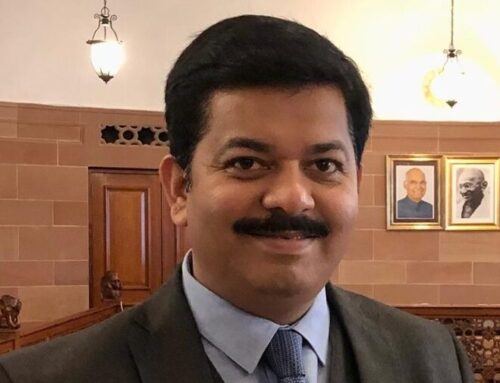When imagining a career devoted to serving the greater good, most envision charities or nonprofits. But over the last few decades, a new model has emerged—for-profit social enterprises.
At first, it might sound counterintuitive. Many think that focusing on profitability could distract or pull funds from the organization’s primary mission. But as social entrepreneurs launch ventures that make money and drastically improve the lives of millions, people are seeing surprising benefits.
Anant Kumar is one of these successful social entrepreneurs with accolades that include the UN World Business and Development Award, the Frost & Sullivan award as the Mother and Child Health Care Provider of the Year, and the Entrepreneur of the Year by the Economic Times NOW TV just to name a few. In 2010, he even participated in a round table with Barack Obama to share his innovative business ideas with the then-President.
In 2005, Anant started his journey into social entrepreneurship when he launched LifeSpring—a maternity hospital that provides India’s poorest women with affordable, high-quality health care. Now, he runs LifeCircle which focuses on caring for India’s growing senior population.
Anant advocates for-profit social enterprises as he believes business to be an incredible equalizer. And once everyone is an equal, real change can flourish.
Social Enterprise vs. Charity or Non-Profit
The concepts may sound similar, but there are significant differences between social enterprises and charities or non-profit organizations.
According to Anant, in a social enterprise, “the primary objective isn’t a return on capital,” he says. “Social equity and social benefits do take precedent.” But in contrast to charities, social enterprises are built on traditional business principles and profitability is always a vital goal. Everyone served by the organization is a paying customer.
By paying even a nominal fee, social entrepreneurs say that customers receive more equal footing in the eyes of the company—something often missing within a traditional charity model. “Think about a charity,” Anant says. “For the recipient, you’re really doing them a favor. You are the donor. They are the recipient. So, you’re not on the same level. When you’re not on the same level, there’s an accountability gap.”
When the service or product is free, recipients are expected to accept whether it offers genuine assistance. This can make recipients feel lesser than—like their real needs aren’t heard or valued. As non-paying customers, they have little, if any, leverage to ask for a change.
If they’re charged a fee, however, there are standards and expectations. Even for relatively affordable items, like a cup of coffee, it’s bad for the business if it’s undrinkable. Potential patrons will just go elsewhere. Therefore, private organizations must provide quality products. “If you don’t provide good care or service, the client will reject you,” Anant says.
This transition from charity recipients to paying clients makes all of the difference. Empowered to ask for what they need, they’ll finally get the social services—and the dignity—that they’ve been seeking.
How to Build a Social Enterprise
Anant was first inspired to create a chain of maternity centers after traveling around India’s public hospitals to market contraceptives. There, he witnessed the dire, over-crowded conditions that low-income women faced while giving birth—many of whom lived off of less than a U.S. dollar a day.
He became determined to find a better way to provide quality, dignified health services to everyone regardless of income level. As a trained marketer, not a healthcare professional, he knew it’d be a challenge. There were also no similar models in his country to emulate. “I only had this idea that we should be able to provide affordable care to the working poor and still remain profitable,” says Anant.
Thankfully, he found support and buy-in from others. Looking for inspiration, they modeled much of their business off of successful low-cost airlines. These companies offer no-frills services that still meet or exceed the industry’s stringent safety standards. They also streamline management and significantly increase the number of customers to boost profits.
By applying these concepts to healthcare, a new business model emerged. “We priced [our services] so that more people could come in,” Anant says. “We saw six to seven times more patients than in a private hospital. The moment we did that, the price of providing a service went down drastically.”
Incredibly, LifeSpring delivered babies for as low as $20 USD while strictly maintaining all health protocols and providing dignity to their patients. The first LifeSpring hospital was so successful that they soon expanded. Today, there are twelve facilities all across India.





